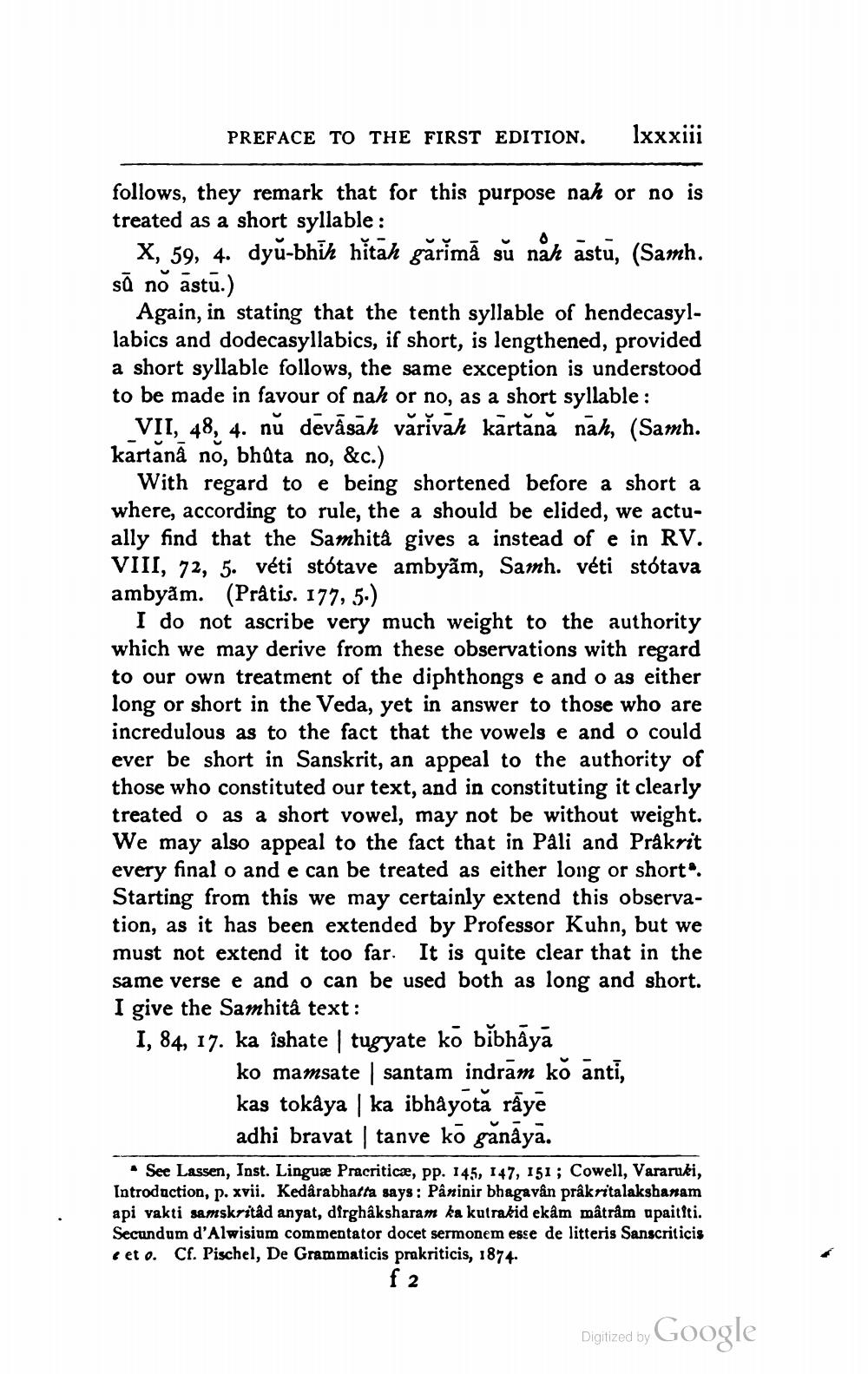________________
lxxxiii
follows, they remark that for this purpose nak or no is treated as a short syllable:
PREFACE TO THE FIRST EDITION.
X, 59, 4. dyŭ-bhih hitah gărimā su nak astu, (Samh. sā no astu.)
Again, in stating that the tenth syllable of hendecasyllabics and dodecasyllabics, if short, is lengthened, provided a short syllable follows, the same exception is understood to be made in favour of nah or no, as a short syllable:
VII, 48, 4. nu devâsah varivah kartana nah, (Samh. kartana no, bhûta no, &c.)
With regard to e being shortened before a short a where, according to rule, the a should be elided, we actually find that the Samhitâ gives a instead of e in RV. VIII, 72, 5. véti stótave ambyam, Samh. véti stótava ambyam. (Prâtis. 177, 5.)
I do not ascribe very much weight to the authority which we may derive from these observations with regard to our own treatment of the diphthongs e and o as either long or short in the Veda, yet in answer to those who are incredulous as to the fact that the vowels e and o could ever be short in Sanskrit, an appeal to the authority of those who constituted our text, and in constituting it clearly treated o as a short vowel, may not be without weight. We may also appeal to the fact that in Pâli and Prakrit every final o and e can be treated as either long or short*. Starting from this we may certainly extend this observation, as it has been extended by Professor Kuhn, but we must not extend it too far. It is quite clear that in the same verse e and o can be used both as long and short. I give the Samhitâ text:
I, 84, 17. ka ishate | tugyate ko bibhāya
ko mamsate santam indram ko anti,
kas tokâya | ka ibhâyota raye
adhi bravat | tanve ko ganaya.
* See Lassen, Inst. Linguæ Pracriticæ, pp. 145, 147, 151; Cowell, Vararuki, Introduction, p. xvii. Kedârabhatta says: Pâninir bhagavân prâkritalakshanam api vakti samskritâd anyat, dîrghâksharam ka kutrakid ekâm mâtrâm upaitîti. Secundum d'Alwisium commentator docet sermonem esse de litteris Sanscriticis eet o. Cf. Pischel, De Grammaticis prakriticis, 1874.
f 2
Digitized by Google




